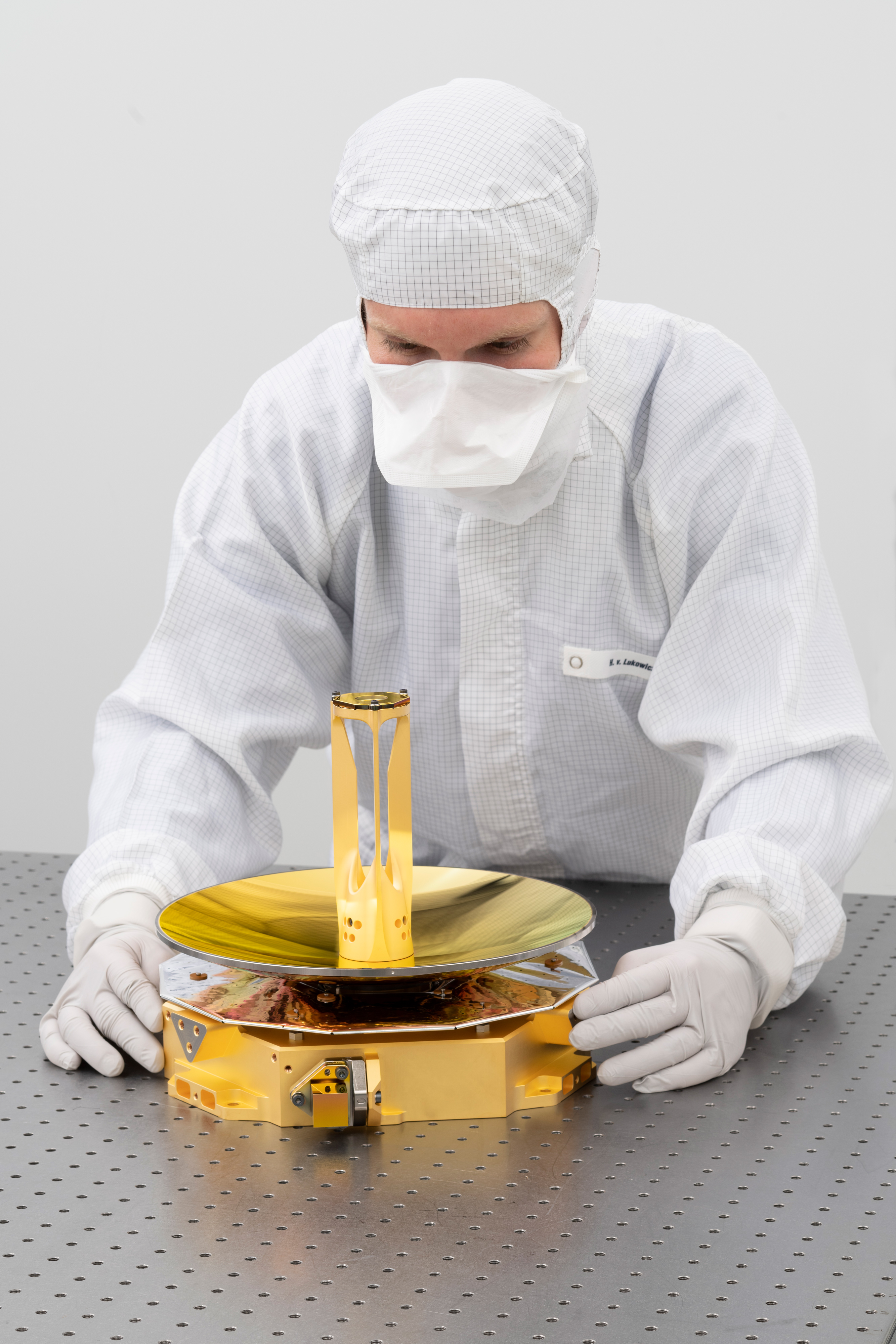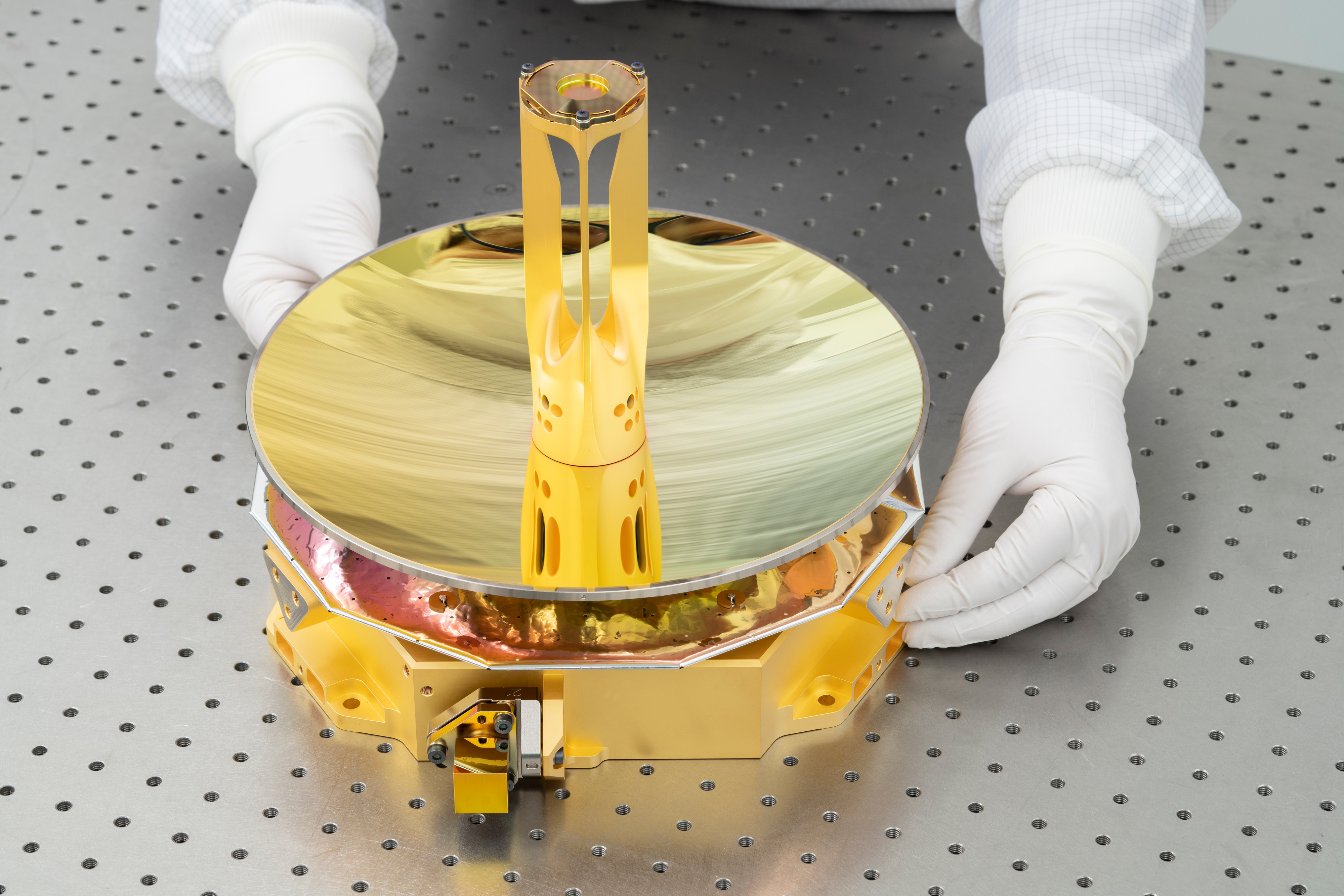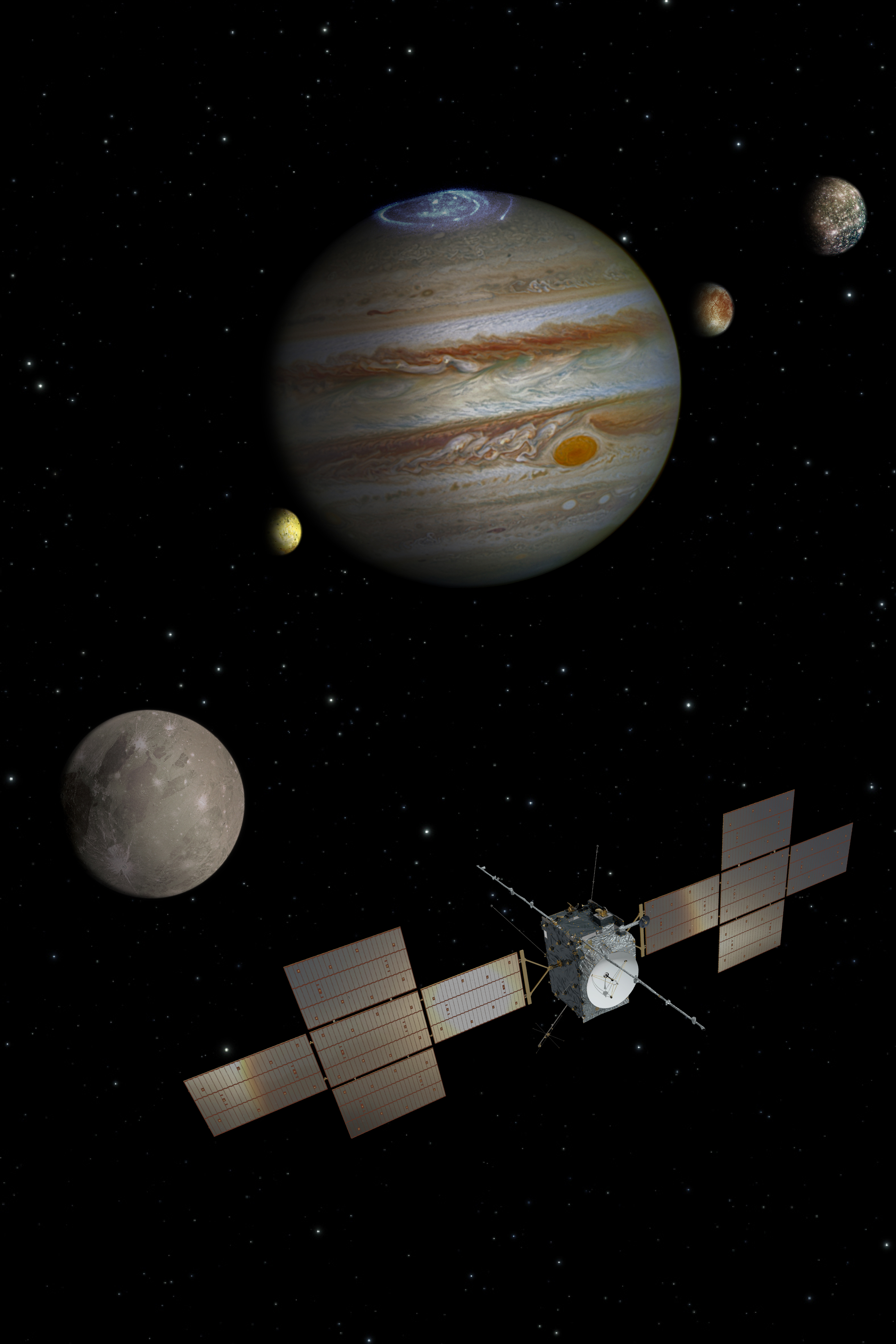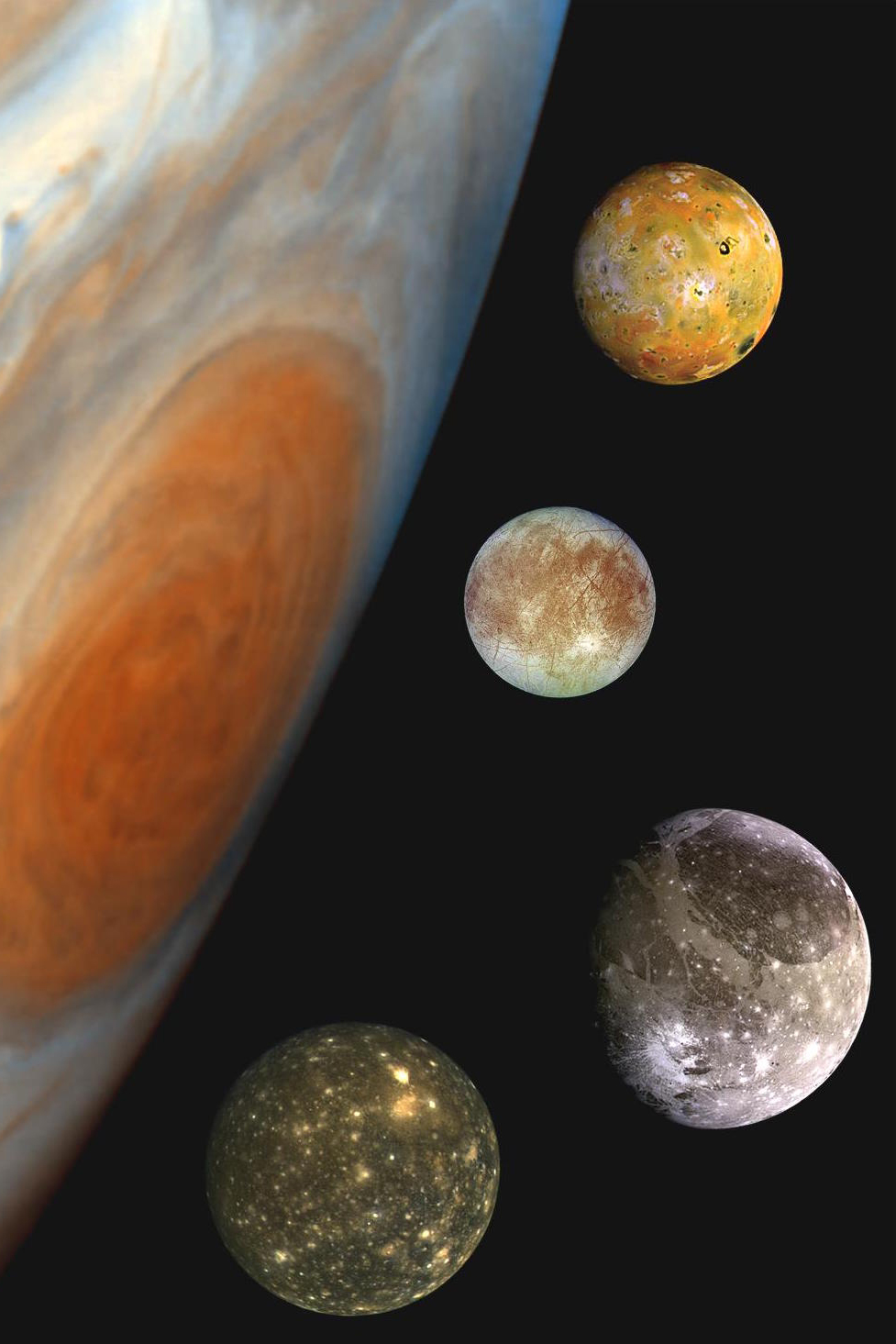Fraunhofer IOF and partners developed measuring instrument GALA
Space mission JUICE launches into space with telescope from Jena to explore Jupiter and its moons
On April 13, the European Space Agency (ESA) will launch its JUICE mission to explore Jupiter and its moons. On board of the spacecraft will be the GALA measuring instrument. It will use laser pulses to measure the surface of the Earth-like moon Ganymede. The instrument was developed by researchers at the Fraunhofer Institute for Applied Optics and Precision Engineering IOF in Jena together with the company HENSOLDT Optronics. GALA will be the first "deep space laser altimeter" to be used at a distance of approximately one billion kilometers from Earth.
It is the largest planet in our solar system and therefore appropriately bears the name of the Greek father of the gods: Jupiter. No fewer than 92 moons orbit this planet, and new satellites are being discovered by researchers all the time. Especially the moon Ganymede, which is covered with ice, is in the focus of the scientists, because it has a special similarity to the earth.
To investigate Ganymede, but also the moons Callisto and Europa as well as Jupiter itself, the European Space Agency is scheduled to launch a space probe on April 13 in the direction of the giant planet, the "Jupiter Icy Moons Explorer" - in short: JUICE. To fulfill its research mission, a total of ten scientific instruments are on board of the spacecraft. One of them is the "Ganymede Laser Altimeter", also known as GALA, which was co-developed by researchers from Jena. The instrument is intended to measure the geographic composition of Jupiter's moon.
Exploration of Jupiter's moon Ganymede using laser altimetry
"As part of the JUICE mission, a laser altimeter is being used for the first time as a high-precision metal optic for exploring Jupiter's icy moon Ganymede," explains Dr. Stefan Risse, head of the Precision Optical Components and Systems department at Fraunhofer IOF. "With a laser altimeter, distances can be measured very precisely, even over very long distances," he continues. "We hope to use it to gain new, fundamental scientific insights into the topography of Jupiter's moon Ganymede and the question of its origin," he adds.
To collect this information, GALA sends laser pulses to the moon from an orbit around Ganymede - i.e., from about 500 kilometers - and receives reflected signals. From the transit time of the pulse, the distance to the lunar surface can be determined and the topography calculated. This requires a high-precision laser receiving unit. This was realized by Fraunhofer IOF in Jena together with HENSOLDT Optronics GmbH from Oberkochen, Germany. For this purpose, Fraunhofer IOF developed a special reflecting telescope that captures the laser pulses that are reflected back from the lunar surface. In this way, GALA can measure the topography of Jupiter's moon with a resolution of less than 10 centimeters.
One particularly important question that GALA could answer in the future is whether there are water deposits on Ganymede: "The measurements with GALA take place at different orbital positions of the moon Ganymede in relation to Jupiter," explains Dr. Henrik von Lukowicz, head of the Precision Systems research group at Fraunhofer IOF. "If there were water below the surface, the tidal forces as a result of the moon's motion would lead to a deformation of the surface. This means GALA could possibly even prove the existence of water."
GALA is the first deep-space laser altimeter
The GALA laser altimeter will be the world's first deep-space laser altimeter to be deployed at a distance of approximately one billion kilometers from Earth. The mission will take more than ten years: the JUICE probe will initially need eight years to arrive in orbit around Jupiter. The subsequent three years will be spent exploring Jupiter's moons Europa, Callisto and Ganymede, as well as Jupiter.
"On the way to Jupiter, the optical telescope we have developed must cope with extreme environmental conditions in ultra-high vacuum, characterized by enormous acceleration during rocket launch, high temperature changes and very strong cosmic radiation," says Dr. von Lukowicz, explaining the special demands on optical components in space. "The excellent opto-mechanical properties will make it possible to explore Jupiter's icy moons even under these challenging conditions."
The JUICE mission is scheduled to launch from ESA's Kourou spaceport in French Guiana on April 13 or April 15, 2023 at the latest. The carrier rocket for the launch will be Ariane 5.
Award-winning cooperation between research and industry
The entire GALA system was developed and built under the leadership of the DLR Institute of Planetary Research. In addition to HENSOLDT Optronics GmbH from Oberkochen in Baden-Württemberg and Fraunhofer IOF from Thuringia, other partners from Germany, as well as Japan, Switzerland and Spain are involved.
For the scientific and entrepreneurial partnership especially between the company HENSOLDT and the Fraunhofer IOF, the team members involved were honored with the Lothar Späth Award in November 2021. The Lothar Späth Foundation presents the award to cooperatively created, outstanding innovations in products, processes and services in Baden-Württemberg and Thuringia.
Supplementary Information
- Website of the ESA on the JUICE mission:
https://www.esa.int/Science_Exploration/Space_Science/Juice - ESA press events (April 6 and 13) on the JUICE mission launch:
https://www.esa.int/Newsroom/Press_Releases/Media_invitation_Juice_launch_media_opportunities - Website of the DLR Institute of Planetary Research on the JUICE mission:
https://www.dlr.de/pf/en/desktopdefault.aspx/tabid-10617/
Press images
- ESA provides a comprehensive press kit with images and video material related to the JUICE mission at the following link: https://www.esa.int/Science_Exploration/Space_Science/Juice



